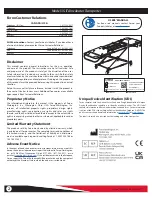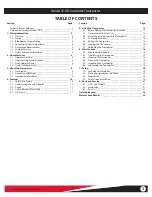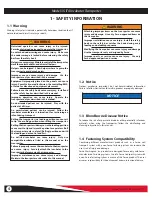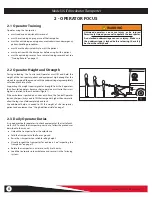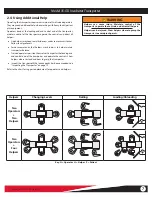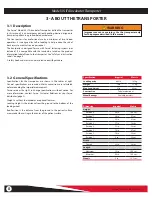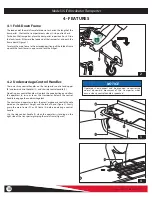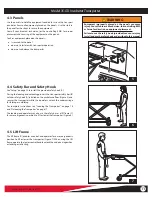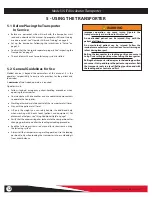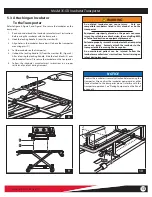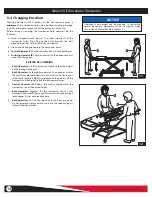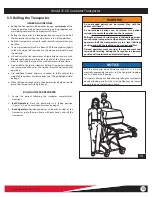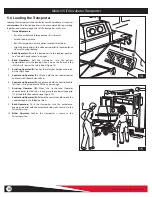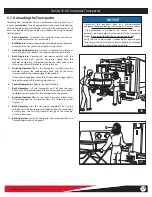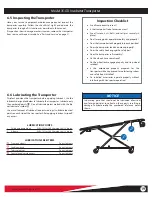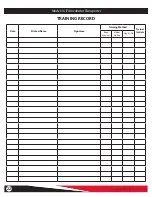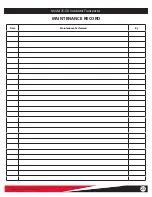
© Ferno / 234-1929-06 / July 2021
15
Model 35-ITA Incubator Transporter
5.5 Rolling the Transporter
GENERAL GUIDELINES
●
Rolling the transporter with a patient requires a
minimum
of two
trained operators who are communicating, working together, and
maintaining control of the transporter at all times.
●
Rolling the transporter in a loading position can cause it to tip. Roll
the transporter only when the main frame is in a rolling position.
●
Roll the transporter on smooth, unobstructed surfaces whenever
possible.
●
To cross a low obstacle such as a door sill, lift the transporter slightly
to take the weight off the wheels so the wheels roll smoothly over
the obstacle.
●
Lift and carry the transporter over a high obstacle such as a curb.
Do not
apply downward force on one end of the transporter in
order to raise the other end of the transporter over the obstacle.
●
Do not roll the transporter sideways. Rolling a transporter sideways
can increase the chance for it to tip and injure the patient and/or
operators.
●
Use additional trained helpers as needed to safely control the
weight of the patient and transporter. See “Using Additional Help”
●
When rolling over rough terrain, the operators (and helpers) should
grasp the transporter with both hands.
ROLLING THE TRANSPORTER
1. Secure the patient following the incubator manufacturer’s
directions.
2.
Both Operators
: Place the transporter in a rolling position
(Figure 13). See “General Specifications” on page 8.
3.
Both Operators:
Position yourselves at the ends or sides of the
transporter, grasp the main frame with both hands, and roll the
transporter.
NOTICE
Roll the transporter downhill control-end first. If it is not
medically appropriate to do this, roll the transporter loading-
end first, but do the following:
To maintain transporter balance while rolling the transporter
downhill loading-end first, the Assisting Operator must exert
upward force on the fold-down frame.
13
WARNING
An unattended patient can be injured. Stay with the
patient at all times.
An unrestrained patient can be injured. Use patient
restraints to secure the patient on the transporter.
Rolling the transporter sideways or in the loading position
can cause the transporter to tip and injure the patient or
operators. Roll the transporter only in a level (Rolling)
position and with the loading-end or control-end first.
Trained operators must consider the environment and
terrain before rolling. Rolling the transporter in a lowered
position will minimize the potential of tipping.


